Photochemistry and Molecular Photobiology Lab
Head

- Franco M. Cabrerizo, PhD - Principal Researcher CONICET. Associate Professor UNSAM fcabrerizo@intech.gov.ar
Members
- Dra. M. Paula Denofrio - Independent Researcher CONICET. Adjunct Professor UNSAM pdenofrio@intech.gov.ar

- María Micaela González, PhD - Adjunct Researcher CONICET. Adjunct Professor UNSAM mgonzalez@intech.gov.ar

- Ronald Vargas Balda, PHD - Asistant Research CONICET (high in process) . Adjunct Professor UNSAM ronaldevb@intech.gov.ar

- Lorean Madriz, PhD - Asistant Research CONICET (high in process). Head of practical work UNSAM lmadriz@intech.gov.ar
- Jesus Alberto Marquez Ramirez, Lic - Doctoral Fellow ANPCyT jmarquez@intech.gov.ar
- María Mirabal Chemical Engineer - CONICET Doctoral Fellow - amirabalcarrizo@intech.gov.ar
Former members
M. Lis Alomar, PhD (2013 – 2022)
Juan G. Yañuk, PhD (2011 – 2022)
Ivan Maisuls, PhD (2014 – 2019)
Federico Rasse-Suriani, PhD (2011 – 2016)
Damián Rodriguez, PhD (2020 – 2021)
Ivana Karina Levy, PhD (2013 – 2015)
Mariana Vignoni, PhD (2012 – 2013)
Margherita Zuccheli, Lic (2017)
Research Lines
β-carbolines (βCs) comprise a large variety of naturally occurring alkaloids structurally related to 9H-pyrido[3,4-b]indole or norharmane. These alkaloids are widely spread in a vast range of phylogenetically distant species (animals, plants, insects, etc.), including phototrophic organisms. Particularly in mammals, these compounds are a constitutive part of organs, tissues and body fluids (eyes, skin, plasma, urine, etc.). As part of an ongoing program aimed at addressing the molecular basis of those photochemical and photobiological processes where these alkaloids are involved, we study the most relevant spectroscopic, chemical and photochemical properties of both full-aromatic and 3,4-dihydro-βCs (Scheme 1). This fundamental information provides valuable insights to further theorize and/or surmise about the biological role that these compounds might have, as well as to further explore different biotechnological applications.
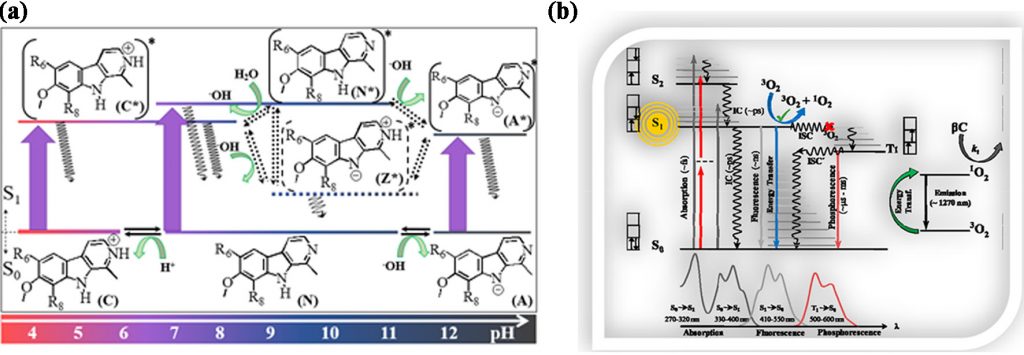
Scheme 1. (a) Some representative investigated compounds (Ha (R6 = R8 = H), 6-Cl-Ha (R6 = Cl and R8 = H), 8-Cl-Ha (R6 = H and R8 = Cl) and 6,8-diCl-Ha (R6 = R8 = Cl)), and dominant acid-base equilibria present in the whole pH range investigated. (b) A modified Jablonsky’s diagram illustrating the most relevant photophysical processes of βCs upon one- and two-photon excitation.
Representative references:
[1] PHYSICAL CHEMISTRY CHEMICAL PHYSICS; 2021, vol. 23 p. 11039 – 11051
[2] PHYSICAL CHEMISTRY CHEMICAL PHYSICS; 2020, vol. 22 p. 20901 – 20913
[3] JOURNAL OF THE ARGENTINE CHEMICAL SOCIETY; 2020, vol. 107 p. 186 – 229
[4] PHOTOCHEMISTRY AND PHOTOBIOLOGY; 2018, vol. 94 p. 36 – 51
[5] PHYSICAL CHEMISTRY CHEMICAL PHYSICS; 2016, vol. 18 p. 886 – 900
[6] DALTON TRANSACTIONS; 2015, vol. 44 p. 17064 – 17074
[7] PHYSICAL CHEMISTRY CHEMICAL PHYSICS; 2015, vol. 17 p. 12090 – 12099
[8] CHEMPHYSCHEM; 2010, vol. 11 p. 796 – 798
[9] JOURNAL OF PHYSICAL CHEMISTRY A; 2009, vol. 113 p. 6648 – 6656
[10] PHOTOCHEMICAL AND PHOTOBIOLOGICAL SCIENCES; 2009, vol. 8 p. 1139 – 1149
Solar radiation induces modifications to genomic DNA as well as proteins. The latter fact can lead to the development of skin cancer in humans. These reactions can occur either by direct electronic excitation of the target biomolecules (due to the UVB portion of the solar spectrum) or by indirect processes. The latter case involves photosensitized reactions, where a certain compound (photosensitizer) is photoexcited (by direct absorption of the UVA and/or visible incident radiation) giving rise to multiple type of oxidative damage on biologically relevant chemical structures (DNA, proteins, etc.).
Little is yet known about the contribution of photosensitized reactions to the generation of skin disorders in humans. Although they are not as effective processes as direct damage to DNA or proteins induced by high energetic UV radiation (UVC or UVB), photosensitization represents an important contribution to the genotoxicity of solar radiation. In this regard, various endogenous and/or exogenous compounds can act as photosensitizers. In particular, βCs alkaloids represent a group of very efficient candidates capable of inducing damage on relevant biological targets (such as DNA material) as well as cell culture, when subject to photoexcitation (Scheme 2). To further understand the mechanism of action involved in those processes, the photosensitizing properties of these alkaloids are deeply and systematically investigated in our group.
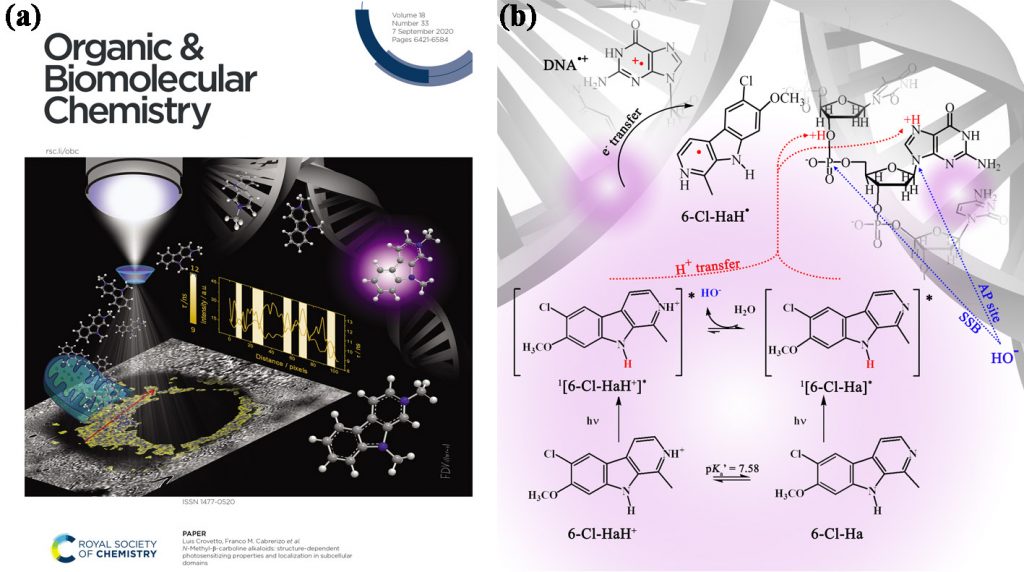
Scheme 2. (a) Cover of the issue N° 33, vol 18, 2020 of Organic and Biomolecular Chemistry journal (RSC). (b) Mechanism of DNA photosensitization induced by photoexcited 6-chloro-harmine.
Representative references:
[1] ORGANIC & BIOMOLECULAR CHEMISTRY; 2020, vol. 18 p. 6519 – 6530
[2] CHEMISTRY-A EUROPEAN JOURNAL; 2018, vol. 24 p. 12902 – 12911
[3] ORGANIC & BIOMOLECULAR CHEMISTRY; 2018, vol. 16 p. 2170 – 2184
[4] JOURNAL OF PHOTOCHEMISTRY AND PHOTOBIOLOGY A-CHEMISTRY; 2018, vol. 364 p. 169 – 176
[5] JOURNAL OF PHOTOCHEMISTRY AND PHOTOBIOLOGY B-BIOLOGY; 2014, vol. 132 p. 67 – 71
[6] PHYSICAL CHEMISTRY CHEMICAL PHYSICS; 2014, vol. 16 p. 16547 – 16562
[7] ORGANIC & BIOMOLECULAR CHEMISTRY; 2013, vol. 11 p. 5300 – 5309
[8] ORGANIC & BIOMOLECULAR CHEMISTRY; 2012, vol. 10 p. 1807 – 1819
[9] ORGANIC & BIOMOLECULAR CHEMISTRY; 2012, p. 9359 – 9372
[10] ORGANIC & BIOMOLECULAR CHEMISTRY; 2010, vol. 8 p. 2543 – 2552
Photodynamic therapy (PDT) is based on the cytotoxicity of photosensitizers in the presence of light. Increased selectivity and effectivity of the treatment is expected if a specific uptake of the photosensitizers into the target cells, often tumor cells, can be achieved. Our group is following two different strategies:
(a) One attractive transporter for that purpose is the folic acid receptor α (FRα), which is overexpressed on the surface of many tumor cells and mediates an endocytotic uptake. To this end, work on the synthesis and photobiological characterization of polar βC derivatives as photosensitizers covalently linked to folate‐tagged albumin as the carrier system. In a previous work we proved that albumin–folate conjugates appear to be promising vehicles for a tumor cell targeted PDT. These particles can be selectively taken up and accumulated in the lysosome of KB (human carcinoma) cells, and can be phototoxic upon photo-excitation. However, the efficiency of these conjugates still needs to be improved (Scheme 3a).
(b) Metal Organic Frameworks (MOFs) represent another set of quite interesting structured nanomaterials with outstanding physicochemical properties. These properties can be fine tuned by changing the chemical nature of either the metal center or the ligand. In the context of photodynamic therapy and drug delivery, our group is interested in a set of nanosize scale MOF made of a reticular structure of Zirconium clusters coordinated to photoactive organic ligands (ZrMOF) (Scheme 3b). These types of MOF-based structures provide a framework for the spatial organization of photosensitisers, potentially enhancing reactive oxygen species production while at the same time providing a porous structure which allows the adsorption of compounds of interest. Moreover, Zr based materials have the advantage of being biocompatible and stable at low pH values. The current ongoing program is aimed at optimizing the ZrMOF structures for their use in photodynamic therapy. Fine tuning of the synthesis process to obtain size-controlled nanomaterials is paramount, given that they should be able to enter target cells to exert damage, whilst control over sensitiser organization is important to avoid self-quenching processes.
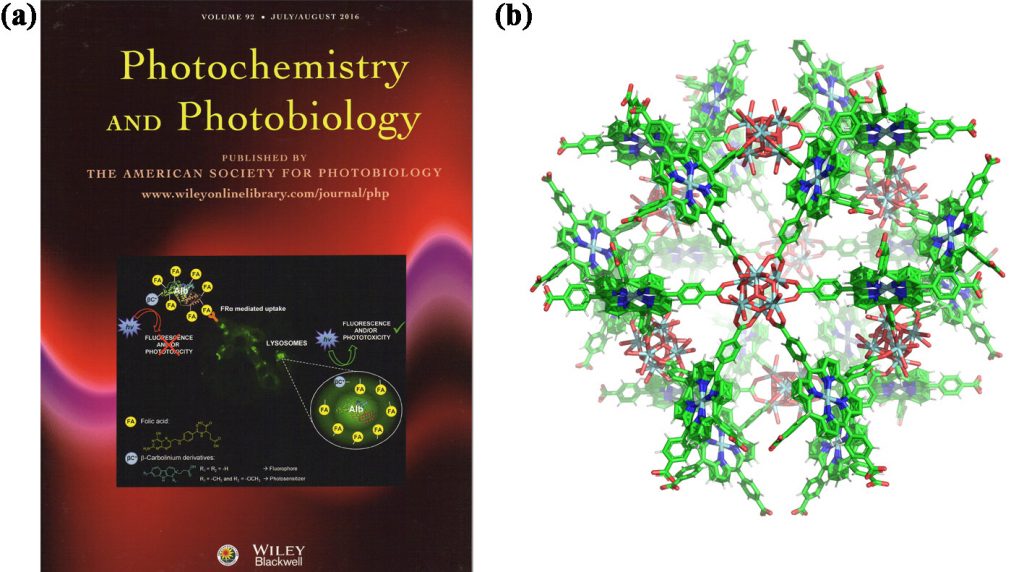
Scheme 3. (a) Cover of the issue N° 4, vol 92, 2016 of Photochemistry and Photobiology journal (Wiley Blackwell). (b) Representative ZrMOF structure.
Representative references:
[1] PHOTOCHEMISTRY AND PHOTOBIOLOGY; 2016, vol. 92 p. 611 – 619.
[2] PHYSICAL CHEMISTRY CHEMICAL PHYSICS; 2015, vol. 17 p. 12462 – 12465.
[3] MICROPOROUS MATERIALS AS DRUG CARRIERS, undergraduate Thesis, Engineer Francisco Simón, 2016.
[4] 2nd prize, INNOVAR 2014 (Category: Phytomedicine) “Terapias alternativas para el tratamiento de la Tritrichomonosis bovina”.
In the last decades, drug resistance of pathogenic agents constitutes a great problem of public health at global level. Therefore, there is a need to find not only new antimicrobials, to improve efficacy and pharmacokinetics of current treatments, but also new strategies for infection prevention. In this context, and taking into account the broad spectrum of anti-pathogenic action of βCs, we evaluate the inhibitory properties of natural or synthetic compounds of this family against different human, animal and/or plant pathogens. To date, we have studied βCs᾽ effect against Herpes Simplex Virus Type I and II, Toxoplasma gondii, Penicillium digitatum and Botrytis cinerea. The synthesis of novel drugs includes alkylations, among others. Separation, purification, and compound characterization methods are those traditionally used in the organic chemistry field (liquid-liquid extractions, chromatographic techniques, RMN, HPLC, thermogravimetric analysis, UV-vis absorption spectroscopy, different mass spectrometry techniques, etc.). The underlying mechanisms of βCs᾽ action are explored through cell cycle analysis, indirect immunofluorescence and western blot assays, intracellular ROS production, among others (Scheme 4).
Additionally, we use the photosensitizing properties of these and other related compounds to improve their inhibitory effect and/or to attenuate the different microorganisms with biotechnological purposes.
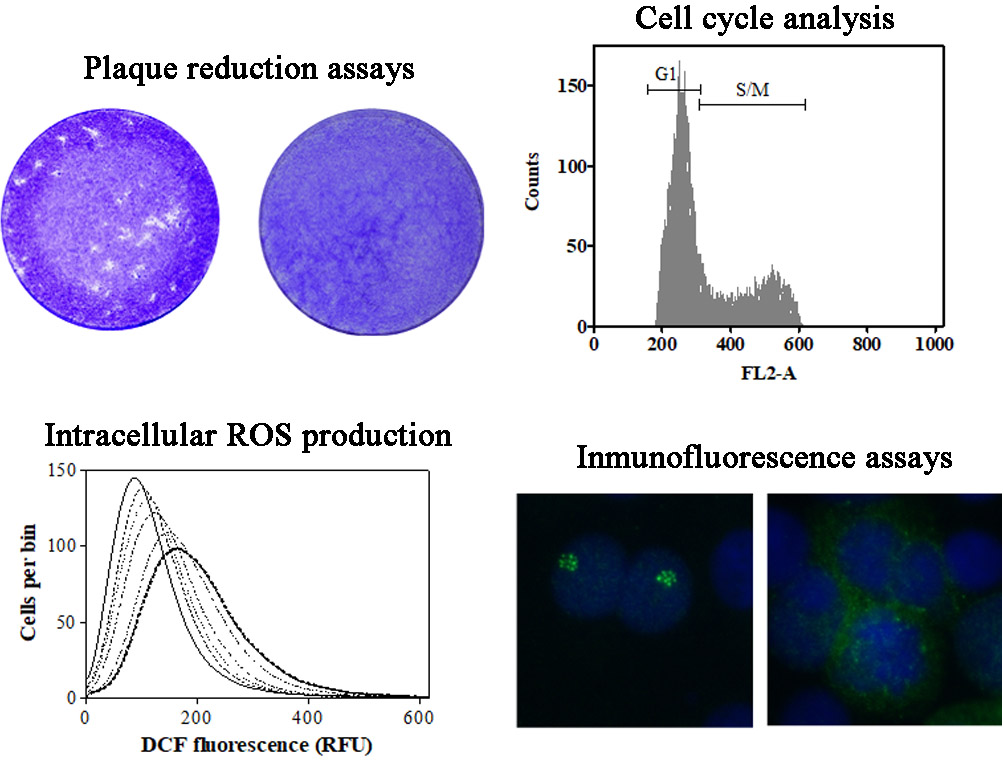
Scheme 4. Representative results obtained from different methodologies when testing the antimicrobial effect of βC derivatives.
Representative references:
[1] FRONTIERS IN MICROBIOLOGY; 2021, vol. 12
[2] INTERNATIONAL JOURNAL OF ANTIMICROBIAL AGENTS; 2018, vol. 52 p. 459 – 468
[3] JOURNAL OF PHOTOCHEMISTRY AND PHOTOBIOLOGY B-BIOLOGY; 2017, vol. 177 p. 8 – 17
[4] FRONTIERS IN MICROBIOLOGY; 2017, vol. 8
[5] FOOD MICROBIOLOGY; 2017, vol. 62 p. 9 – 14
[6] BMC RESEARCH NOTES; 2013, vol. 6 p. 193 – 198
In plants, βCs constitute a large group of indole alkaloids widely distributed in different species including Peganum harmala (Zygophillaceae), Banisteriopsis capii, Leguminoseae, Malpighiaceae, Pasifloraceae, among others. To date, information regarding βCs’ biosynthesis is still incomplete and the chemical processes involved need to be deeply understood. The formation of tetrahydro-βCs would involve a catalyzed Pictet-Spengler condensation from tryptophan and aldehydes. The type and number of enzymes involved in this process differ from one organism to another. In plants, strictosidine synthase (STR) catalyzes the condensation reaction between tryptamine and secologanin to give rise to the formation of the corresponding tetrahydro-βC derivative. Tetrahydro-βC skeleton can be further modified giving rise to the formation of a vast set of derivatives, such as dihydro-, epoxy-, keto, isomeric hydroxy, and/or full aromatic βCs widely distributed in all living organisms. The formation of these compounds may occur through enzymatic and/or non-enzymatic processes. In this regard, taking into account the presence of these alkaloids in aerial organs exposed to sunlight (leaves, stems and others), photochemical pathways should be further investigated as an additional source of non-enzymatic oxidation and/or full-aromatization of tetrahydro-βCs (Scheme 5).
Regarding the biological functions in plants, these alkaloids were suggested to have a key role in the defense response against microbial organisms. However, the mechanisms of action as well as the dependence on the chemical structure still need to be properly unraveled. In addition, and considering the quite rich and versatil (photo)chemistry of βCs, their participation in other processes is expected. Taking this into account, studies regarding βCs role in plants are not only promising but necessary. Our investigations are focused on the elucidation of metabolic modifications triggered by luminic stress (UVB, UVA and/or blue light) in the soybean plant model and the potential protective role of βCs. To this end, stress response is monitored by measuring enzymatic activities and a set of different plant growth parameters. In addition, UV-vis absorption and fluorescence spectroscopy, in combination with chemometric analysis (MCR and PARAFAC), are performed to further analyze the evolution of pigments concentrations (chlorophylls, anthocyanins and carotenoids) in plants subject to the different stress.
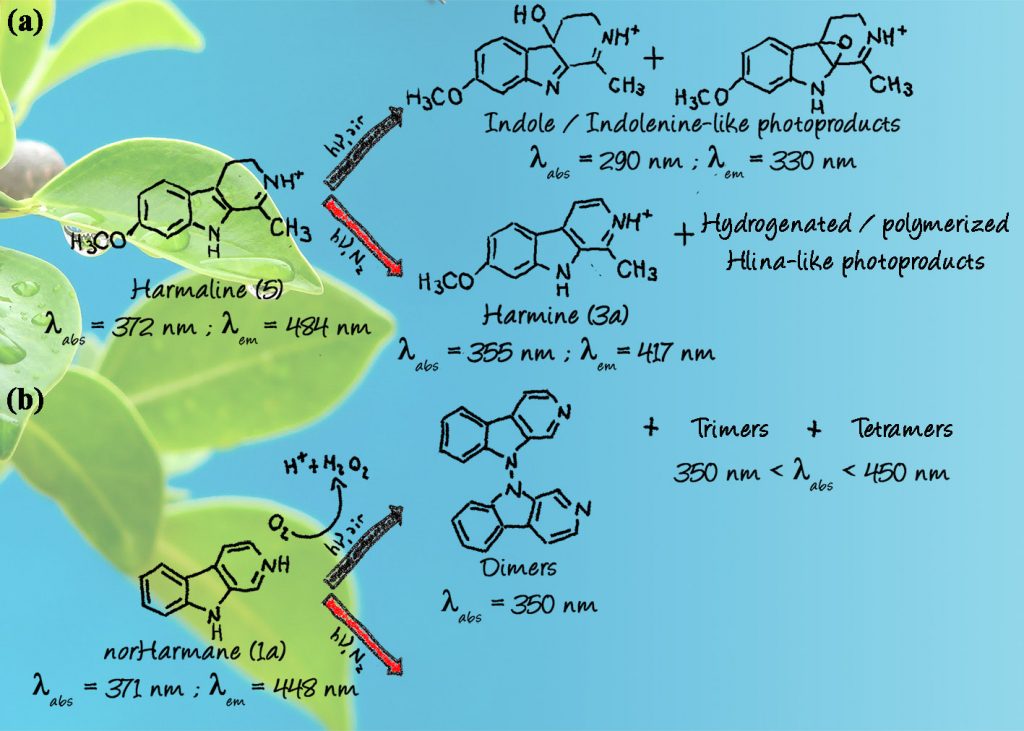
Scheme 5. Scheme of the main photochemical pathways followed by photoexcited (a) Harmaline and (b) Harmine.
Representative references:
[1] JOURNAL OF PHOTOCHEMISTRY AND PHOTOBIOLOGY B-BIOLOGY; 2019, vol. 199
2] PHOTOCHEMICAL AND PHOTOBIOLOGICAL SCIENCES; 2009, vol. 8 p. 1139 – 1149
This research line focuses on understanding fundamental aspects of redox processes (Scheme 6). The four specific goals are aimed at:
(a) Deepening on the oxygen transfer reaction by photoelectrochemical means, which is the basis of one of the advanced oxidation processes that uses sunlight to achieve the remediation of wastewaters.
(b) Exploring the potential of electrocrystallization processes to form new phases, which catalyze reactions related to renewable technologies based on hydrogen and/or reduction of inorganic substances, such as nitrate and metal ions.
(c) In photocatalysis, progress is being made in the use of nanostructured semiconductors to oxidize the organic matter present in water bodies with the concomitant generation of solar fuels by coupling a suitable reduction reaction. Thus, allowing the development of skills in new-age technologies that use solar energy to promote chemical reactions. The role of the optoelectronic properties of semiconductor electrodes that are applied to carry out the water splitting reaction and oxidation of selected chemical compounds is continually being investigated.
(d) Developing electroanalytical methodologies for the detection and quantification of molecules of environmental and agro-industrial interest.

Scheme 6. Cartoon summarizing the main electrochemical processes, reactions and methodology used in the four main research lines described above.
Representative references:
[1] JOURNAL OF PHYSICAL CHEMISTRY C; 2021, vol. 125 p. 610 – 617
[2] JOURNAL OF PHYSICAL CHEMISTRY C; 2021, vol. 125 p. 12682 – 12689
[3] ENERGY REPORTS; 2020, vol. 6 p. 25 – 36
[4] RENEWABLE ENERGY; 2020, vol. 152 p. 974 – 983
[5] SPECTROCHIMICA ACTA. PART A, MOLECULAR & BIOMOLECULAR SPECTROSCOPY.; 2017, vol. 176 p. 91 – 98
Publications
Castañeta G, Miranda-Flores D, Bustos AS,f García R, Loayza E, Carrasco C, Tejeda L, Cabrerizo FM, Peñarrieta JM. Influence of sunlight exposure and traditional dehydration on chemical and nutritional properties of Oxalis tuberosa (oca) Tubers. Plant Foods for Human Nutrition 80, 91. 2025. https://doi.org/10.1007/s11130-025-01330-x
De Gerónimo E, Mosca A, Cabrerizo FM, Vargas R. Insights into chlorination-induced degradation of sulfonylurea herbicides: Unraveling kinetics and intermediates during water treatment. Water Research 280, 123513. 2025. https://doi.org/10.1016/j.watres.2025.123513
Glez S, Carrasco C, Böök O, Castañeta G, Loayza E, Peñarrieta JM, Pepova T, Cabrerizo FM, Tejeda L, A comprehensive analysis of the nutritional value, antioxidant potential and fatty acid composition of lucuma (Pouteria lucuma) fruit, grown in the high-altitude valleys of Bolivia. Anais da Academia Brasileira de Ciências 24, 97. 2025. doi: https://doi.10.1590/0001-3765202520241017
Madriz l, Márquez J, González MM, Denofrio MP, De Gerónimo E, Dell’Arciprete ML, Vargas R, Cabrerizo FM. Electroanalytical and spectroscopic approaches combined with photo (electro)catalytic treatment for real-time decision-making on rural groundwater quality. Journal of Water Process Engineering 77, 108630. 2025. https://doi.org/10.1016/j.jwpe.2025.108630
Rasse-Suriani FAO, Alves Costas R, Denofrio MP, García Einschlag FS, Cabrerizo FM. Interaction of normelinonine F and related N-methyl-β-carbolines derivatives with bovine serum albumin. Spectroscopic profiles, multivariate analysis and theoretical calculation. International Journal of Biological Macromolecules 299, 140136, 2025. https://doi.org/10.1016/j.ijbiomac.2025.140136
Saldarriaga Cartagena AM, Aparicio Arias A, Cristaldi C, Ganuza A, Gonzalez MM, Corvi MM, Sullivan WJ Jr, Vanagas L, Angel SO. Toxoplasma gondii RAD51 recombinase is required to overcome DNA replication stress and its inactivation leads to bradyzoite differentiation. DNA Repair (Amst) 152, 103882, 2025. https://doi.org/10.1016/j.
González MM, Vizoso-Pinto MG, Erra-Balsells R, Gensch T, Cabrerizo FM. Article In Vitro Effect of 9,9′-Norharmane Dimer against Herpes Simplex Viruses. International Journal of Molecular Sciences 25, 4966. 2024. https://doi.org/10.3390/ijms2509496
Hojamberdiev M, Vargas R, Madriz L, Kadirova Z, Shaislamov U, Sannegowda L, Jedruchniewica K, Typek R, Teshima K, Czech B. Unveiling the origin of the efficient photocatalytic degradation of nitazoxanide over bismuth (oxy) iodide crystalline phases. Environmental Science Nano 11, 336-350. 2024. https://doi.org/10.1039/d3en00548h
Hojamberdiev M, Vargas R, Madriz L, Kadirova ZC, Yubuta K, Zhang F, Teshima K, Lerch M. Untangling the effect of carbonaceous materials on the photoelectrochemical performance of BaTaO2N. ACS Omega 9, 6, 7022-7033.2024. https://doi.org/10.1021/acsomega.3c08894
Márquez V, Ng E, Torres D, Borrás C, Scharifker BR, Cabrerizo FM; Madriz L, Vargas R. Chapter in “Advances in Catalyst Research”. Electrochemical approach for hydrogen technology: fundamental concepts and materials. Edit: Springer Cham, 339-376. 2024. https://doi.org/10.1007/978-3-031-49108-5_10
Ospina-Calvo B, De Gerónimo E, Villarruel FD, Aparicio VC, Ashworth L, Erra-Balsells R, Cabrerizo FM. Distribution of photoactive β-carboline alkaloids across Passiflora caerulea floral organs. Photochemistry and Photobiology 100, 87-100. 2024. https://doi.org/10.1111/php.
Ragone F, Yanuk JG, Cabrerizo FM, Prieto E, Wolcan E, Ruiz GT. DNA structural changes (photo)induced by tricarbonyl (pterin)rhenium (I) complex. Journal of Inorganic Biochemistry 252, 112471. 2024. https://doi.org/10.1016/
Ramzan M, Raza A, un Nisa Z, Abdel-Massih RM, Al Bakain R, Cabrerizo FM, Dela Cruz TE, Aziz RK, Musharraf SG. Detection of antimicrobial resistance (AMR) and antimicrobial susceptibility testing (AST) using advanced spectroscopic techniques: A review. TrAC Trends in Analytical Chemistry 172, 117562. 2024. https://doi.org/10.1016/j.trac.2024.117562
Vargas R, Méndez D, Torres D, Carvajal D, Cabrerizo F, Madriz L. Simultaneous p-nitrophenol remediation and hydrogen generation via dual-function photoelectrolytic cell: P-TiO2 photoanode and CuP cathode International Journal of Hydrogen Energy 59, 159-167. 2024. https://doi.org/10.1016/j.ijhydene.2024.01.303
Villarruel FD, Denofrio MP, Schmidt de León T, Erra-Balsells R, Wolcan E, García Eincschlagd FS, Cabrerizo FM. Exploring photooxidative degradation pathways of harmol and harmalol alkaloids in water: effects of pH excitation sources and atmospheric conditions. Physical Chemistry Chemical Physics 7, 5723 – 6460. 2024. https://doi.org/10.1039/D3CP05223K
Zhu H, Cabrerizo FM, LI J, He T, Li Y. Rewiring photosynthesis by water-soluble fullerene Derivatives for solar-powered electricity generation. .Advanced Science 2310245. 2024. https://doi.org/10.1002/advs.202310245
Apuzzo E, Agazzi M, Herrera SE, Picco A, Rizzo G, Chavero C, Bianchi D, Smaldini P, Cortez ML, Marmisollé WA, Padula Gm Seoane A, Alomar ML, Denofrio MP, Docena G, Azzaroni O. Poly(allylamine)-tripolyphosphate ionic assemblies as nanocarriers: friend or foe?. ACS Applied Bio Materials 6,11, 4714-4727. https://doi.org/10.1021/acsabm.3c00489
Cabrerizo FM. A boost for south–south collaboration. Nature 616, 249. 2023. https://doi.org/10.1038/
Denofrio MP, Paredes JM, Yañuk JG, Giron MD, Salto R, Talavera EM, Crovetto L, Cabrerizo FM. Photosensitizing properties and subcellular localisation of 3,4-dihydro-β-carbolines harmaline and harmalol. Photochemical & Photobiological Sciences 22, 488-501. 2023. https://doi.org/10.1007/
dos Santos AJ, Barazorda-Ccahuana HL, Caballero-Manrique G, Chérémond Y, Espinoza-Montero PJ, Jáuregui-Haza UJ, Lanza MRV, Nájera A, Oporto C, Pérez Parada A, Pérez T, Delgado Quezada V, Rojas V, Sosa V, Thiam A, Torres-Palma RA, Vargas R, García Segura S. Accelerating innovative water treatment in Latin America. Nature Sustainability 6, 349-351. 2023. https://doi.org/10.1038/s41893-022-01042-z
Gómez Velázquez Laura S, Dell’Arciprete María L, Madriz Lorean, González Mónica C. Carbon nitride from urea: Mechanistic study on photocatalytic hydrogen peroxide production for methyl orange removal. Catalysis Communications 175, 106617. 2023. https://doi.org/10.1016/j.catcom.2023.106617
Gómez-Velázquez LS, Madriz L, Rigoletto M, Laurenti E, Bizarro M, Dell’ Arciprete ML, González M. Structural and physicochemical properties of Carbon Nitride nanoparticles via precursor thermal treatment: effect on methyl orange photocatalytic discoloration. ACS Publications Nano Materials 6, 14049-14062. 2023. https://doi.org/10.1021/acsanm.3c01935
Hojamberdiev M, Larralde AL,Vargas R, Madriz L, Yubuta K, Sannegowda LK, Sadok I, Krzyszczak-Turczyn A, Oleszczuk P, Czech B. Unlocking the effect of Zn2+ on crystal structure, optical properties, and photocatalytic degradation of perfluoroalkyl substances (PFAS) of Bi2WO6. Environmental Science: Water Research and Technology 9, 2866–28796. 2023. https://doi.org.10.1039/d3ew00430a
Hojamberdiev M, Vargas R, Zhang F, Teshima K, Lerch M. Perovskite BaTaO2N: From materials synthesis to heterogeneous solar water splitting. Advance Science 2305179. 2023. https://doi.org/10.1002/advs.202305179
Madriz L, Cabrerizo FM, Vargas R. Electrochemical studies on β-carbolines alkaloids: Kinetics of irreversible oxidation processes. Electrochimica Acta 464, 142918. 2023. https://doi.org/10.1016/j.electacta.2023.142918
Nuñez O, Vargas R. Chapter 8: The interplay between RedOx, photophysics and surface process in Bi2WO6 photocatalyst. En «A Closer Look at Chemical Kinetics Chemistry». Editado por: Victor Martinez-Luaces. Nova Science Publishers 206-222. 2023. https://d0i:10.52305/GLSO9660
Vargas R, Madriz L, Vilar VJP, Fatta-Kassinos D. Updating the difficulties of the Venezuelan scientific work. Journal of Environmental Chemical Engineering 11, 109579. 2023. https://doi.org/10.1016/j.jece.2023.109579
Espinoza-Montero P, Vargas R, Alulema-Pullupaxi P, Fernández L. Advanced Oxidation Processes for Wastewater Treatment: An Innovative Approach. En “Photoelectrocatalysis: Principles and Applications”. Editado por Shah mP, Bera SP, Tore GY. CRC Press, Boca Ratón, Florida, USA. pp 53-68. 2022. https://doi.org/10.1201/978100
Hojamberdiev M, Czech B, Wasilewska A, Boguszewska-Czubara A, Yubuta K, Wagata H, Daminova S, Kadirova Z, Vargas R. Detoxifying SARS-CoV-2 antiviral drugs from model and real wastewaters by industrial waste-derived multiphase photocatalysts. Journal of Hazardous Materials 429, 128300. 2022. https://doi.org/10.1016/j.jhazmat.2022.128300
Hojamberdiev M, Mora-Hernández J M, Vargas R, Heppke EM, Yubuta K, Yamakata A, Kadirova Z, Torres-Martínez L, Teshima K, Lerch M. Eliciting the contribution of TiN to photoelectrochemical performance enhancement of Imma-LaTiO2N at neutral pH. Materials Today Energy, 27, 101053. 2022. https://doi.org/10.1016/j.mtener.2022.101053
Hojamberdiev M, Vargas R, Daminova S, Kadirova Z. Understanding the photodegradation mechanism of gaseous acetaldehyde over BI2W06-modified ZNW04 photocatalyst under UV light irradiation. Chemistry and Chemical Engineering 2021, 4, 9. 2022. https://doi.org/10.
Hojamberdiev M, Vargas R, Kadirova Z, Teshima K, Lerch M. Exploring the Effect of B-Site Al3+-Mg2+ + Dual Substitution on Optoelectronic, Surface, and Photocatalytic Properties of BaTaO2N. Materials Advances 3, 7348–7359. 2022. https//doi.org/10.1039/D2MA00611A
Hojamberdiev M, Vargas R, Kadirova ZC, Kato K, Sena H, Krasnov AG, Yamakata A, Teshima K, Lerch M. Unfolding the role of B site-selective doping of aliovalent cations on enhancing sacrificial visible light-induced photocatalytic H2 and O2 evolution over BaTaO2N. American Chemical Society Catalysis 12, 1403-1404. 2022. https://doi.org/10.1021/
Otuechere CA, Adewuyi A, Ekozin A, Feng X, Cabrerizo FM. Green synthesized zinc oxide nanoparticles elicited a prominent suppression of oxidative and inflammatory distortions in rats exposed to carbon tetrachloride. Biointerface Research in Applied Chemistry 12, 5444-5457. 2022. https://doi:10.33263/BRIAC124.54445457
Vargas R, Madriz L, Marquez V, Torres D, Kadirova ZC, Yubuta K, Hojamberdiev M. Elucidating the enhanced photoelectrochemical performance of zinc-blende ZnS/wurtzite ZnO heterojunction and adsorption of water molecules by molecular dynamics simulations. Materials Science in Semiconductor Processing 142, 106494. 2022. https://doi.org/10.1016/j.mssp.2022.106494
Hojamberdiev M, Vargas R, Bhatu VS, Torres D, Kadirova ZC, Kumar M. Unraveling photoelectrochemical behavior of Ni-modify ZnO and TiO2 thin films fabricated by RF magnetron sputtering. Journal of Electroanalytical Chemistry. 882, 115009. 2021. https://doi.org/10.1016/j.jelechem.2021.115009
Leon D, Maimone A, Carvajal D, Madriz L, Scharifker BR; Cabrerizo FM, Vargas R. Unraveling kinetic effects during photoelectrochemical mineralization of phenols. Rutile: anatase TiO2 nanotube photoanodes under thin-layer conditions. Journal of Physical Chemistry C 125, 610–617. 2021. https://doi.org/10.1021/acs.jpcc.0c09890
Madriz L, Cabrerizo FM, Vargas R. Exploring chemical kinetics at home in times of pandemic: following the bleaching of food dye allura red using a Smartphone. Journal of Chemical Education 98, 6, 2117–2121. 2021. https://doi.org/10.
Madriz L, Parra M, García Einschlag FS, Núñez O, Cabrerizo FM, Vargas R. Photocatalytic Oxidation of Urea on Surface-Modified Bi2WO6 with trans-4-Stilbenecarboxaldehyde. Journal of Physical Chemistry C. 125, 12682-12689. 2021. https://doi.org/10.1021/acs.jpcc.1c03063.
Rueda H, Arenas M, Vargas-Balda R, Blanco S, Delvasto P. Production of a nickel-based catalyst for urea electrooxidation using spent batteries as raw material: Electrochemical synthesis and implications from a circular economy stand-point. Sustainable Materials and Technologies 29, e00296. 2021. https://doi.org/10.1016/j.
Denofrio MP, Rasse-Suriani FAO, Paredes JM, Fassetta F, Crovetto L, Giron MD, Salto R, Epe B, Cabrerizo FM. N-Methyl-β-carboline alkaloids: structure-dependent photosensitizing properties and localization in subcellular domains. Organic and Biomolecular Chemistry 18, 6519-6530. 2020. https://doi.org/10.1039/D0OB01122C
Madriz L, Tatá J, Carvajal D, Núñez O, Scharifker BR, Mostany J, Borrás C, Cabrerizo FM, Vargas, R. Photocatalysis and photoelectrochemical glucose oxidation on Bi2WO6: Conditions for the concomitant H2 production. Renew Energ 152, 974-983. 2020. https://doi.org/10.1016/j.renene.2020.01.071
Torres D, Madriz L, Vargas R, Scharikfer BR. Electrochemical formation of copper phosphide from aqueous solutions of Cu(II) and hypophosphite ions. Electrochimica Acta 354, 136705. 2020. https://doi.org/10.1016/j.electacta.2020.136705
Vargas R, Cabrerizo FM, Hojamberdiev M. FOREWORD: Perspectives of TWAS Young Affiliates from the Global South on Solving World’s Energy Issues. Energy Rep. 6, 1. 2020. https://doi.org/10.1016/j.egyr.2019.11.154
Villarruel FD, Denofrio MP, Erra-Balsells R, Wolcan E, Cabrerizo FM. Photophysical and spectroscopic features of 3,4-dihydro-β-carbolines: a combined experimental and theoretical approach. Physical Chemistry Chemical Physics 22, 20901-20913. 2020. https://doi.org/10.1039/D0CP03363D
Yañuk JG, Cabrerizo FM, Dellatorre FG, Cerdá MF. Photosensitizing role of R-phycoerythrin red protein and β-carboline alkaloids in Dye sensitized solar cell. Electrochemical and spectroscopic characterization. Energy Rep. 6, 25-36. 2020. https://doi.org/10.1016/j.egyr.2019.10.045
Zucchelli M, Villarruel FV, Gara PD, Costante MR, Tascon M, Marte F, GarcíaEinschlag FS, Cabrerizo FM, Photophysics and photochemistry of carminic acid and related natural pigments. Physical Chemistry Chemical Physics 22, 9534-9542. 2020. https://doi.org/10.1039/D0CP01312A
Villarruel F, Denofrio MP, Rasse-Suriani FAO, García Einschlag FS, Schmidt De León T, Erra-Balsells R, Cabrerizo FM. Light-induced full aromatization and hydroxylation of 7-methoxy-1-methyl-3,4-dihydro-2H-pyrido[3,4-b]indole alkaloid: Oxygen partial pressure as a key modulator of the photoproducts distribution. J Photochem Photobiol B. 199: 111600. 2019. https://doi.org/10.1016/j.jphotobiol.2019.111600
Yañuk JG, Cabrerizo FM, Dellatorre FG, Cerdá MF. Photosensitizing role of R-phycoerythrin red protein and ß-carboline alkaloids in Dye sensitized solar cell. Electrochemical and spectroscopic characterization. Energy Rep. 2019. En prensa. https://doi.org/10.1016/j.egyr.2019.10.045


